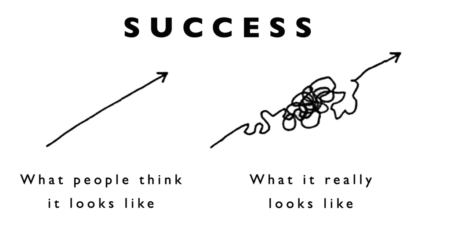A listening-led approach to sales: 5 key questions to close B2B sales for tech companies
Too often, startups approach sales as a time to talk about themselves and their product. They fail to use sales calls to learn about potential customer’s needs and miss the opportunity to tailor their messaging to that customer’s particular needs and challenges. The template shared here can help startups reorient their sales from pitching to listening, to better close deals.
Access to credit in Nigeria is still way below acceptable levels. According to EFInA Access to Financial Services Survey, only 2% of Nigerians had access to a bank loan in 2020. The Central Bank of Nigeria has tried to improve access to finance by stipulating that banks maintain a minimum loan to deposit ratio of 65%. However, increased liquidity alone will not solve the problem because there are additional barriers to lending. A critical barrier to lending is lack of data about potential borrowers. Lack of such data can explain the absence of efficient credit status verification systems, identity management programs, and data-driven lending decisions.
Catalyst Fund portfolio company Indicina is seeking to address these challenges by harnessing the predictive power of artificial intelligence to create proprietary algorithms that can build more effective credit-scoring models. In addition, Indicina provides the software infrastructure for loan origination, disbursement, collections and loan portfolio management for customers like commercial banks, microfinance institutions, and other non-bank lenders.

To achieve their ambitious goal of automating Africa’s credit infrastructure, Indicina needs to master B2B sales. This includes navigating lengthy sales cycles, dealing with multiple stakeholders and crucially, aligning with potential corporate customers’ needs, expectations and objectives, all while ensuring sales resources are allocated toward high potential customers. Given its early-stage, Indicina must focus its efforts on high-value targets that are immediately ready and able to adopt the solution. To identify such targets, Catalyst Fund helped Indicina refine its sales approach to become more listening-led with a view to increasing its sales conversions.
Listening-led sales
To ensure they are allocating sales efforts to the right customers, startups like Indicina need to utilize initial calls to gather information about customers. This requires shifting from a pitching approach to sales to one driven by questions and listening.
To ensure that early sales efforts focus on gathering information to identify high-value targets, Catalyst Fund developed a question framework to guide sales efforts. These questions are designed to ensure that sales teams get the information they need across five categories of questions that the team should cover during calls, including: customer’s level of digitization, the size of the opportunity, their decision-making processes, sales timelines & prioritization, and shared benchmarks & success criteria. We are sharing these questions as a template so that other software-as-a-service startups can adopt them to improve their sales processes.
1. Level of Digitization
When selling a software or fintech product, it is important to understand what parts of the customer’s operations are currently digital. Customers must be ready and able to adopt/integrate the product to be a viable sales candidate. If they are insufficiently digital, the startup will end up dedicating too much resource to technical support. In contrast, a customer that is too digital may not need such a product or could develop a similar solution in-house.
To understand, a first step in the sales process must be to assess the level of digitization of potential customers. It is critical to determine what parts of the potential customer’s business have undergone digitisation, to assess whether the customer is able to adopt the solution and whether they have a need for it.
For example, if you are selling a cybersecurity solution, your prospect should have data and infrastructure that needs protection from intrusion, malware, phishing, etc. The absence of such infrastructure is a sign that there may be a mismatch between what you are offering and the prospect’s needs.
The questions in this section will provide a clear indication of the prospect’s digital journey and help determine whether they seek a technology solution/partner like yours.
2. Size of the opportunity
The next group of questions in this sales approach is designed to determine the size of the business opportunity with the prospect. This will give an early indication of the profitability of the sale or if there is a misalignment between effort and the potential upside.
Important questions here include the size of their customer base, the demographics of their customers, and their preferred channels for digital interaction such as mobile versus desktop computers, or on-premise solutions versus cloud offerings. Key metrics such as customer growth and retention rates are also key to understand how the business opportunity will develop in the future.
3. Decision-making process
Third, sales teams need to understand how potential clients make decisions about such purchases. Many salespeople underestimate the intricacies of the decision-making processes within corporate organizations. Within corporate governance structures, there are often multiple decision-makers who need to sign off on a sale. Some organisations cannot make certain purchases without approvals at the highest levels of executive management or even the board. It is also important to know the frequency of such gatherings/avenues for deliberation.
A successful sales process requires that the sales team understand the prospect’s approval process and the level of executive buy-in needed to close the sale. Doing so means understanding the prospective organisation’s strategic priorities and how your solution aligns with them. You need to understand the customer’s short-term and long-term goals so that you can articulate how your offering can help them to achieve those goals quicker or at a lower cost.
Another often overlooked area to explore is if the prospect already has an in-house team responsible for implementing the solution. Is the customer looking to consolidate, co-exist or replace the existing solutions/infrastructure? The absence of a functional unit responsible for this area can often point to a lower prioritisation of the business problem you are trying to address.
4. Timelines/Prioritization and deal development
Next, it is important to have a clear picture of how long it could take to close the sale. This is especially true for startups that have limited runway or whose growth is tied to sales milestones.
Key questions could also include implementation timelines for new solutions, where the offered solution sits on the scale of priorities and if budgets for the particular priority area have been approved or if extra-budgetary approvals will be required.
5. Benchmarks & Success Criteria
Finally, startups need to get a clear indication of the operating environment within the target prospect as well as unearth lessons from customers’ previous engagements. It is very helpful to know how the organization has tried to solve the identified business problem in the past. For example, have there been other versions of the proposed solution? Who is the competition? What are the reservations or challenges presented by your solution? What was discontinued using the solution?
Another important thing to probe is what the customer defines as success criteria. Often, organisations will choose solutions offered by companies whose solutions are more closely aligned to their identified success criteria because this provides a justification for the additional investment.


